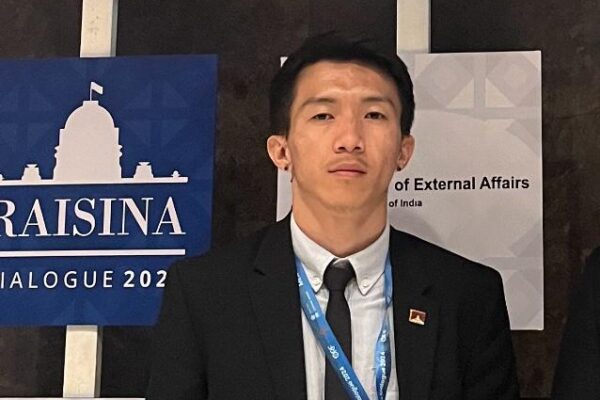China’s Communist Party set to open key policy meeting amid economy worries
Top members of the ruling Communist Party of China will gather Monday to discuss ways to lift the world’s second-biggest economy out of its post-COVID slump and reduce dependence on technology from its geopolitical rival, the United States. The four-day, closed-door meeting, chaired by President Xi Jinping, is expected to unveil tax system revisions and other debt-reduction measures, steps to deal with a massive property crisis, and policies to boost domestic consumption, policy advisers have said. Previous third plenum sessions of the Chinese Communist Party Central Committee – more than 300 full and alternate members – have unveiled policy initiatives for the next five to 10 years. Some have announced significant shifts. Residential buildings under construction by Chinese real estate developer Vanke in Hangzhou, in eastern China’s Zhejiang province, March 31, 2024. (AFP) The 1978 plenum launched Deng Xiaoping’s historic economic reform and opening policies, while the 1984 event confirmed the reform direction in the face of resistance. The 1993 gathering pledged a recommitment to market economic reforms after the clampdown following the Tiananmen massacre. The 12 years of the Xi Jinping era have put the brakes on market reforms as Xi consolidated power in the party, analysts said. Xi’s third plenum 2013 “laid out a series of economic reforms, most of which have not succeeded, most of which have not been carried through,” said Barry Naughton, the So Kwan Lok Chair of Chinese International Affairs at the University of California San Diego. “So everyone is very curious and puzzled to see what this new third plenum is going to bring,” he told Radio Free Asia Mandarin. The previous plenum, 2018, saw Xi further consolidate power with the scrapping of presidential term limits. Interventionist policies This plenum, normally held once every five years, was expected last autumn but delayed without explanation until this month. Yu Jie, a senior research fellow on China at Chatham House, a British think tank, said the plans to be unveiled in coming days “are unlikely to be policies eagerly waited and favored by private enterprises and global investors.” Instead of stimulus measures to boost growth, expect “further government intervention to channel economic resources into the strategic and innovation sectors and to guarantee minimum social welfare to the poor,” she wrote on the Chatham House website. RELATED STORIES Chinese police target dissidents, petitioners ahead of plenum China’s jobless struggle amid economic slump China to hold long-delayed plenary meeting to boost embattled economy The Communist Party will introduce two economic slogans during the plenum: “New quality productive force” describing making the Chinese economy a leader in technological innovation, and “new national system” of stronger centralized control allocating capital and resources to sectors with strategic significance,” Yu wrote. “The underlying emphasis here is not on the economy but on geopolitics,” she added. Chinese state media have tried to create an upbeat mood for the secretive gathering Jingxi Hotel in Beijing. “Entering July, Chinese people’s expectations will be running high,” according to a June 30 commentary in the Global Times newspaper, predicting “a holistic package of new reform plans” that is expected from the meeting. “After more than 40 years’ reform and opening-up, Chinese policymakers are becoming both astute and experienced in managing a giant economy like China’s,” it said. Tech war over consumption Naughton said, however, Chinese firms and people are not very bullish. “It’s quite clear that the expectations and household understandings of the economy have deteriorated dramatically since 2022. People have a hard time getting jobs. People’s income growth is slower and they feel much less confident about it,” he told RFA. The International Monetary Fund has said China’s economy is set to grow 5% this year, after a “strong” first quarter, but other economists warned the recovery has been imbalanced in favor manufacturing and exports over consumption. “Xi Jinping clearly wanted the majority of the state’s resources and the majority of the state’s attention to be focused on this technological war with the United States, to wean China off the dependence on technology that has been dominated by Americans,” Naughton said. “He doesn’t care about the rate of growth of consumption of the Chinese people,” he added. An employee counts Chinese yuan banknotes at a bank in Hefei, Anhui province, Nov. 11, 2010. (Reuters) Ahead of the conclave, China is ramping up its “stability maintenance” system, which kicks into high gear targeting those the authorities see as potential troublemakers ahead of top-level meetings and politically sensitive dates in the calendar. Authorities across China are targeting dissidents and petitioners ahead of next week’s key meeting of the ruling Communist Party, placing them under house arrest or escorting them out of town on enforced “vacations,” Radio Free Asia reported this week. Several high-profile activists including political journalist Gao Yu, rights lawyer Pu Zhiqiang and political commentator Zha Jianguo have been targeted for security measures ahead of the third plenary session of the party’s Central Committee, a person in Beijing familiar with the situation who asked not to be named for fear of reprisals said. Reporting by Ting I Tsai. Editing by Paul Eckert.



